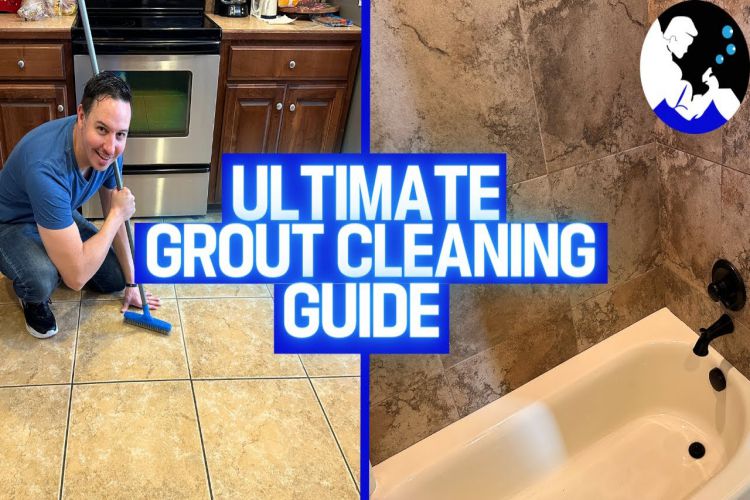Grout may seem like a minor detail in your home’s flooring or tiled surfaces, but over time, it can collect dirt, stains, and mold, detracting from the beauty of your tiles. Whether it’s in the kitchen, bathroom, or entryway, keeping grout clean is essential to maintain both hygiene and aesthetics. In this article, we’ll cover everything you need to know about grout cleaning, from choosing the right cleaning materials to effective techniques to ongoing maintenance tips that prolong the life and look of your grout.
Why Grout Cleaning Matters
Grout is porous, which means it easily absorbs dirt, oils, and moisture. This can cause discoloration and even promote mold and mildew growth, especially in damp environments like bathrooms. Dirty grout not only looks unattractive but can also harbor bacteria and allergens. Regular cleaning protects your floors and walls, preserves the grout’s integrity, and keeps your home healthier.
Choosing the Right Cleaning Materials
Before you start scrubbing, it’s important to select the appropriate cleaning agents and tools:
- Mild Cleaners: For light cleaning, a simple solution of warm water mixed with dish soap or white vinegar can work wonders. These are gentle on grout and tile surfaces.
- Making Paste with Baking Soda: This common natural method involves combining baking soda and water to create a paste. Because baking soda is mildly abrasive, it can remove dirt without causing damage to grout.
- Commercial Grout Cleaners: For tough stains or deep cleaning, specially formulated grout cleaners can be effective. Look for pH-neutral products to avoid damaging your grout or tile.
- Avoid Harsh Chemicals: Stay away from bleach or ammonia-based cleaners unless your grout is white and sealed, as these can cause discoloration or damage.
- Cleaning Tools: Use a stiff-bristled brush designed for grout. Old toothbrushes can work for small spots, but specialized grout brushes offer better scrubbing power. Avoid metal brushes that might scratch tiles.
Effective Grout Cleaning Techniques
- Dry Cleaning First: Begin by vacuuming or sweeping the tiled area to remove loose dirt and debris. This prevents you from grinding dirt into the grout while scrubbing.
- Apply Cleaner: Use your chosen cleaning solution, whether a commercial grout cleaner or homemade paste, and apply it directly onto the grout lines. Let it sit for 5 to 10 minutes to penetrate stains.
- Scrub Gently but Thoroughly: Using a grout brush, scrub the grout lines in small sections. Work in circular or back-and-forth motions to loosen dirt. Avoid excessive pressure to prevent grout damage.
- Rinse Well: After scrubbing, rinse the area thoroughly with clean water to remove residue from the cleaning agents and lifted dirt.
- Dry the Surface: Use a clean towel or microfiber cloth to dry the tiles and grout. This helps prevent moisture buildup, which can encourage mold growth.
- Repeat if Needed: Stubborn stains may require a second round of cleaning.
Dealing with Mold and Mildew
Bathrooms and kitchens are common places for mold in grout due to high humidity. To tackle mold:
- Use a mixture of one part hydrogen peroxide to two parts water as a mold-fighting spray. Apply, let sit for 10 minutes, scrub lightly, then rinse.
- For persistent mold, a commercial mold remover safe for grout may be necessary.
- Ensure proper ventilation and reduce moisture to prevent future mold growth.
Sealing Grout for Long-Term Protection
Once your grout is clean and fully dry, consider applying a grout sealer. Sealers create a protective barrier that repels water, dirt, and stains. This reduces the frequency of deep cleanings and prolongs grout life.
- Choose a penetrating grout sealer suitable for your grout type (sanded or unsanded).
- Apply the following manufacturer’s instructions, usually using a small brush or applicator.
- Reseal grout every 1 to 3 years, depending on wear and exposure.
Regular Maintenance Tips
- Routine Cleaning: Wipe down tiled surfaces regularly with a mild cleaner or a damp cloth to prevent buildup.
- Spot Clean Stains Quickly: Address spills or stains as soon as they happen to avoid permanent discoloration.
- Use Doormats: Reduce dirt tracked indoors by placing mats at entrances.
- Avoid Abrasive Tools: Use soft sponges or microfiber cloths for routine cleaning to protect grout integrity.
- Control Humidity: Use exhaust fans and dehumidifiers in moisture-prone areas.
When to Call Professionals
If your grout is severely stained, cracked, or damaged, professional cleaning and repair services may be the best option. Experts have access to industrial-grade cleaning tools and can regrout or repair damaged areas to restore your tiled surfaces.
Conclusion
Keeping your grout clean is vital to maintaining the overall beauty and hygiene of your tiled spaces. With the right cleaning materials, effective techniques, and regular maintenance, you can keep grout lines looking fresh and prevent damage from mold and stains. Remember, gentle cleaning paired with periodic sealing provides long-lasting protection. For stubborn issues or extensive grout repair, professional help ensures your floors and walls stay in top shape.

